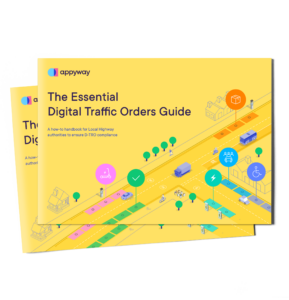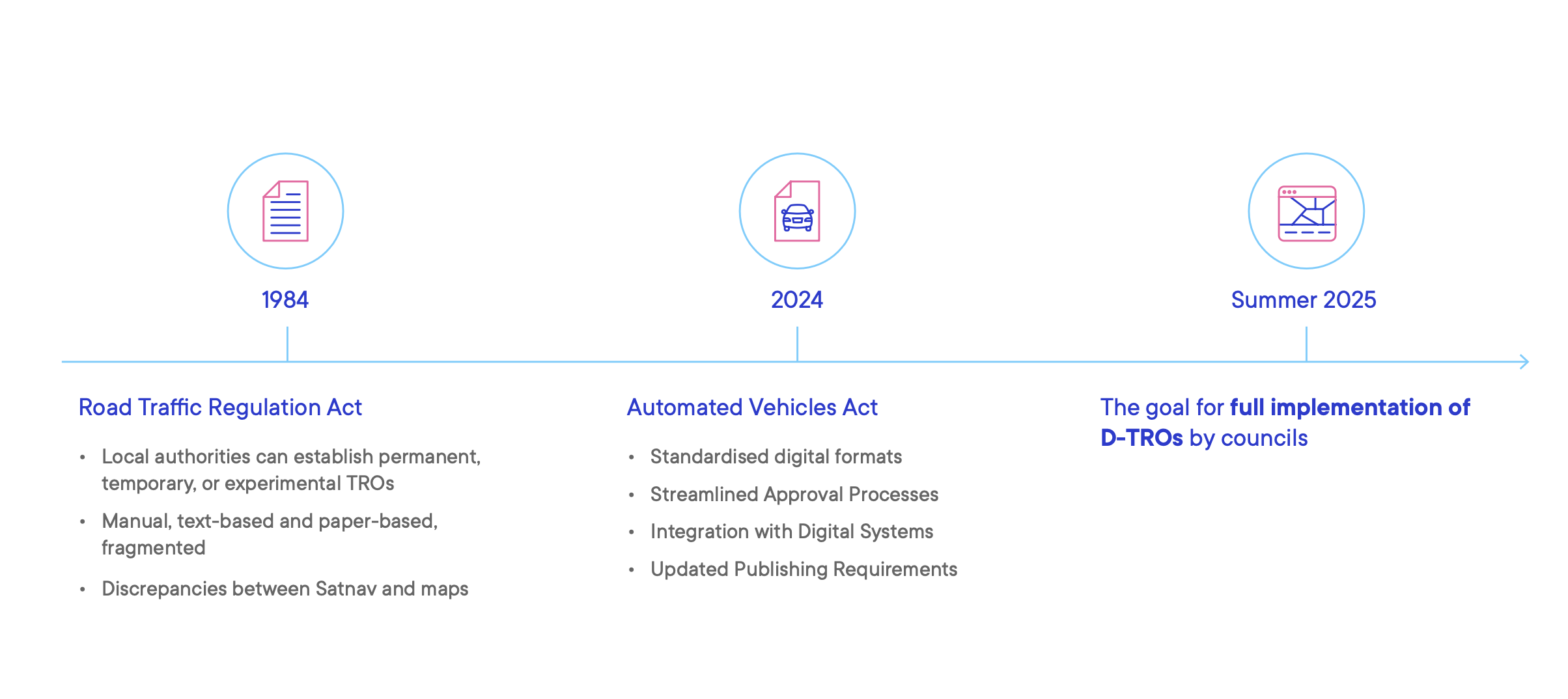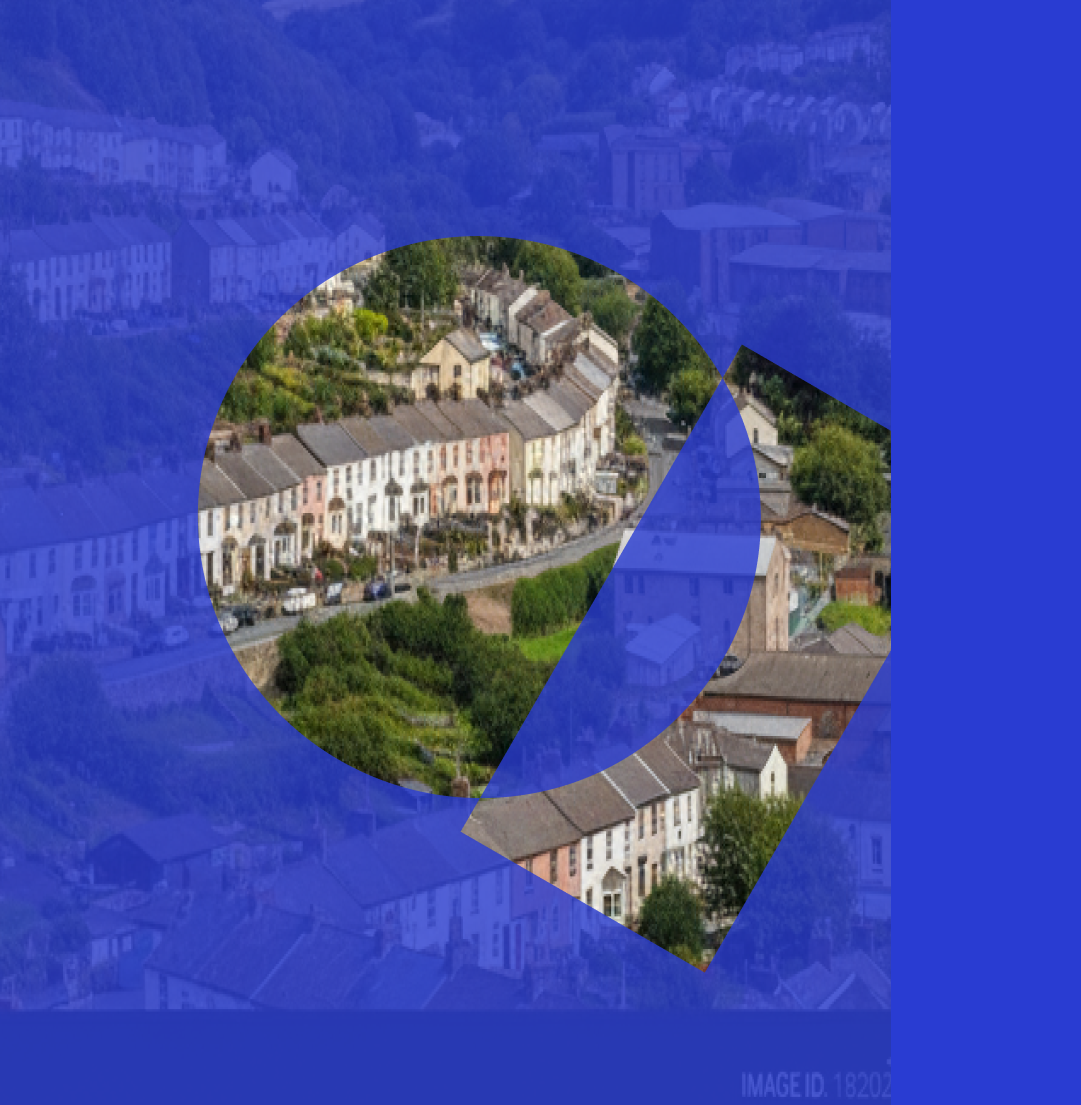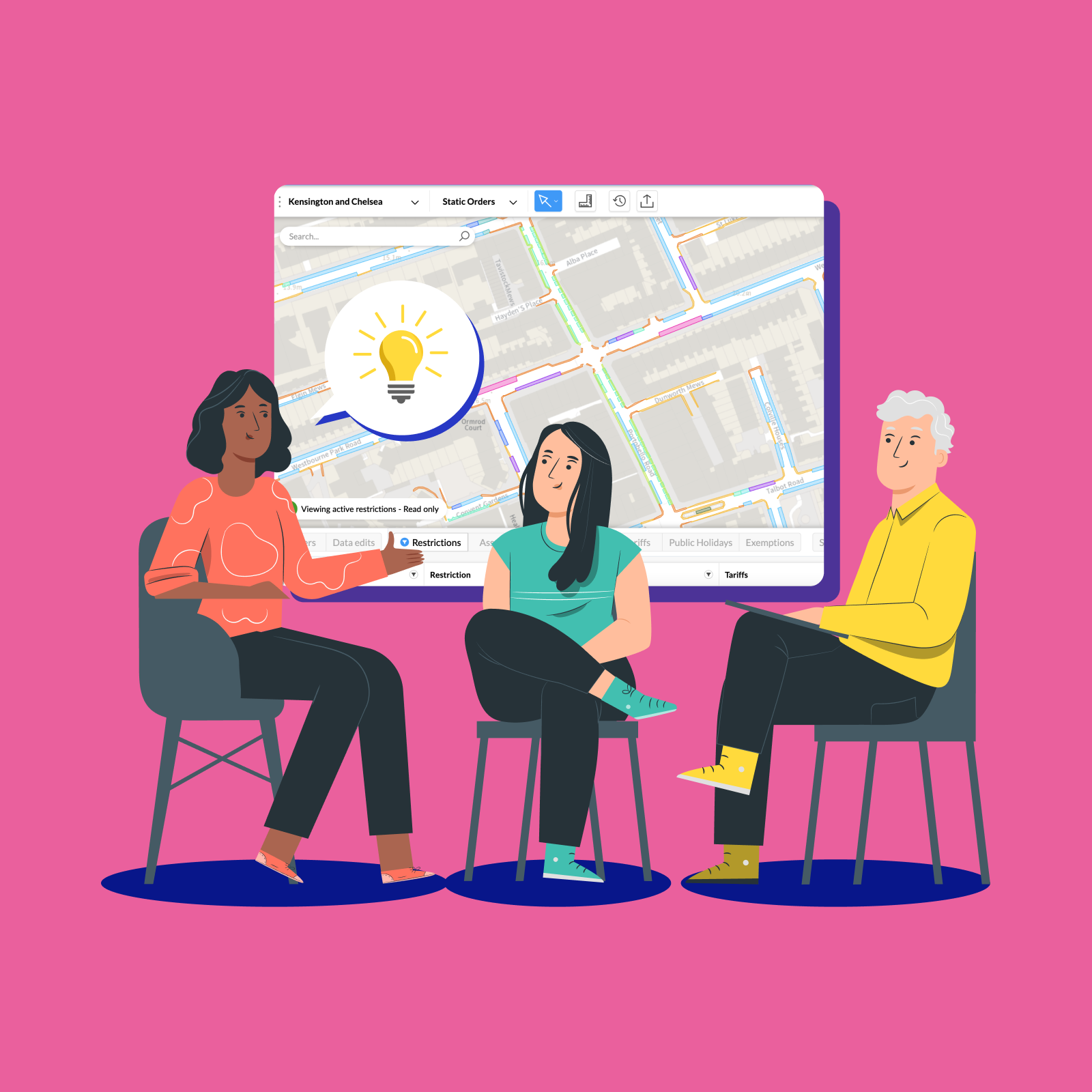As local authorities gear up for the digital transformation of traffic management, D-TROs have become a hot topic. We’ve experienced it in person – whenever we go to an event this season, most of the coffee break chats we participate in touch the digitalisation topic in one way or another. As the AppyWay team, we’d love to offer you one place with the most important answers – that’s why we created this blog post.
Here’s a comprehensive FAQ to address the most pressing digital traffic regulation order questions you might have.

Want to get a full overview of D-TROs, what they mean and how to prepare to the implementation of digital traffic orders in your local authority?
Click here to download our free handbook “The Essential Digital Traffic Orders Guide”
What are D-TROs?
D-TROs, or Digital Traffic Regulation Orders, are the modernised, digital version of traditional Traffic Regulation Orders (TROs). They are legal instruments used by local authorities to manage traffic flow, enhance road safety, and regulate parking in a digital format.
Key features of D-TROs include:
- Map-based digital records: Unlike traditional text-based TROs, D-TROs are primarily map-based, providing a visual representation of traffic regulations.
- Standardised data format: D-TROs use machine-readable data formats, making them easily shareable and interpretable by various systems
- Real-time updates: D-TROs can be updated and disseminated in real-time, ensuring that the most current traffic regulations are always available
- Integration with digital systems: They are designed to integrate seamlessly with other digital systems, including navigation apps and future autonomous vehicle technologies
- Enhanced accessibility: D-TROs are more accessible to the public and stakeholders, improving transparency in traffic management

Stafford as seen trough D-TRO management tool Mapper
Why are D-TROs important?
Digital Traffic Regulation Orders (D-TROs) are modernising how we manage traffic rules and regulations in the UK. By summer 2025, all councils must switch to these digital standards to comply with the Automated Vehicles Act 2024.
D-TROs bring significant improvements to traffic management. They allow for quick updates to traffic rules, especially during emergencies, and cost less than traditional paper systems. The digital format ensures information is more accurate and easily accessible to everyone who needs it.
These digital systems are particularly crucial for the future of transportation. They provide the up-to-date traffic information that self-driving vehicles need to operate safely on public roads. D-TROs also integrate with other smart city technologies, helping authorities make better decisions about urban planning and traffic flow based on real data.
Got any more digital traffic regulation orders questions? Learn more here:
When do local authorities need to implement D-TROs?
The deadline for councils to comply with new digital standards is summer 2025. This timeline is set by the UK Government as part of their Plan for Drivers and the Automated Vehicles Bill.

What are the benefits of using D-TROs for traffic order management
There are plenty – just check in our ebook, which has a whole chapter on this topic! But let’s focus on most important ones here. D-TROs offer several significant benefits for traffic order management:
- Improved Efficiency: D-TROs streamline workflows and reduce errors in traffic order management processes. This digital approach significantly reduces the time and resources required compared to traditional paper-based methods.
- Enhanced Communication: D-TROs facilitate better information sharing across various stakeholders, including the public, enforcement agencies, and other council departments. This improved communication leads to more effective implementation of traffic regulations.
- Real-time Updates: D-TROs enable real-time updates to traffic regulations, which can be instantly shared across various platforms. This capability is particularly valuable during emergencies, special events, or when rapid changes to traffic flow are necessary.
- Integration with Digital Systems: D-TROs are designed to integrate seamlessly with other digital systems, including navigation apps and future autonomous vehicle technologies. This integration enhances the overall effectiveness of traffic management.
- Enhanced Public Engagement: Digital platforms make it easier for the public to access and understand traffic regulations. This increased transparency can lead to better compliance and more effective public consultations on proposed changes.
AppyWay’s Traffic Suite solution offers seamless integration capabilities for your D-TRO, particularly with enforcement systems. For example, the integration with TES has proven highly effective for local authorities like Lambeth Council. 👇
How can local authorities choose the right
D-TRO system?
It’s a complex decision, starting with “should I build or buy” answer – luckily, we have a whole blogpost dedicated to making this decision.
Once decided that the best way is to go with a third-party software provider, authorities should consider:
- Scalability of the solution
- Ease of integration with existing systems
- Vendor support and expertise
- Compliance with DfT standards
- User-friendliness and training requirements
(There is a whole chapter about the pros and cons of buying or building own D-TROs in our ebook!)
What are the key terms related to D-TROs?
- Traffic Regulation Order (TRO): Legal instrument used to manage traffic, parking, and road safety
- Automated Vehicles Act: Legislation mandating the digitalisation of TROs
- Kerbside management: The regulation and control of roadside spaces for various purposes
- API (Application Programming Interface): Mechanism allowing software components to communicate, crucial for integrating D-TRO systems with other platforms
- GIS (Geographic Information System): Technology used for creating, managing, and analysing spatial or geographic data in D-TROs
- Open data: Freely available, standardised data that can be accessed and used by the public and stakeholders





